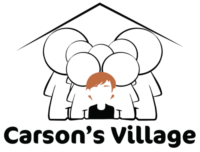The following is an excerpt from The National Alliance for Grieving Children (NAGC) Grief Talk: Talking to a Child or Teen to Let them Know Someone has Died.
Children as young as two will assume care of an adult who is grieving. They do not want to cause hurt in loved ones, so their emotions are often hidden. Maintaining as much routine as possible, even a simple meal, bedtime rituals, will help children of any age be aware of their support people, feel secure, and that there is hope. Take family walks, bike rides, or just play outside.
Considerations For Young Children:
• Conversations should be brief, honest, frequent, and include something for a child to play with, such as figures, medical play sets, ambulance, crayons, blocks.
• Explain that dead means the body has stopped working. They are not “sleeping” (fear of going to sleep), have not “gone to a better place” (ie. Disneyland), are not “lost” (‘we have to go find them’).
• At this age, death is ‘reversible.’ Use examples in nature such as flowers, a pet to demonstrate death is permanent, not only for today but every day from now on.
• Typical ‘magical thinking’ at this age can create misconceptions. Though adults may see it as harsh, direct, clear words: dying, death, dead, are helpful to the child. (Magical thinking is a child’s belief that what they wish or expect can affect what happens. For example, if a child wants very much for something to happen, and it does, the child believes he or she caused it to happen.)
• Incorporate your family’s belief of the afterlife. It helps a child know where their person or the person’s spirit, aura, soul, and life force is to maintain a connection.
• Repetition of questions is normal. At this age, they have no experience to relate the death to. It is a new concept and needs repetition for the child to learn what death means.
• Have your child help choose a support person, someone they know well and are very comfortable with, as a go-to when a parent or caregiver isn’t available.
• Acknowledge grief is felt in our heart and body (tummy/body aches, sleep/eating issues, lethargy/hyperactivity, and attention issues). Activities such as yoga, controlled breathing (ie. blowing bubbles), bike riding, running, kicking a ball, going outside, and punching a pillow can help.
• Play is a child’s first language. Play with your child during the first and the many subsequent conversations. They may not look like they are listening, but they absorb every word and sense the seriousness of the talk. They are learning about death. Watch how death is incorporated into their play. This is normal processing and learning.
• A child grieves in different ways at different times. A child may adapt to the death quickly. As the child grows, grief will likely return at developmental changes, significant family/social/school events, holidays. Developmental growth broadens the understanding of death and its impact on the child’s life.
© 2020 National Alliance for Grieving Children | ChildrenGrieve.org
